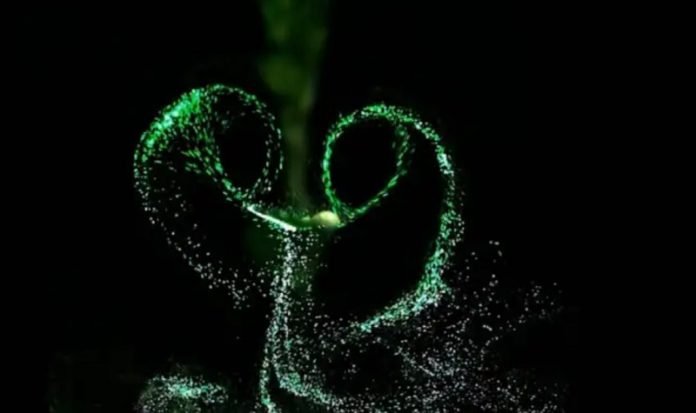
Scientists have made a fascinating discovery about how diseases spread among plants, thanks to a new study from Cornell University.
Imagine raindrops falling on a leaf, but instead of just getting wet, the leaf starts to shake and creates small whirlwinds that can carry diseases to other plants.
This is what happens when rain hits wheat plants sick with rust, a disease that has caused a lot of trouble for crops all over the world.
The researchers used high-speed cameras to see how these tiny air whirlwinds, which they compare to “tiny tornadoes,” help spread the disease.
By studying the movement of the leaf and the air around it, they’ve taken a big step towards figuring out how to stop plant diseases from moving from one leaf to another.
Sunghwan Jung, a professor at Cornell and the lead author of the study, along with Zixuan Wu, a doctoral student in Jung’s lab, explained that when a leaf infected with a disease shakes, it can send harmful spores flying into the air.
These spores can then land on healthy plants and make them sick too.
To understand this better, the team didn’t use real disease spores because of safety reasons. Instead, they used tiny glass particles that act like spores.
With the help of advanced camera technology, they watched how these fake spores flew around and learned a lot about how diseases could be spreading in fields.
Their research, which feels a bit like shrinking down to see the world of air currents and spores up close, borrows ideas from how scientists study big weather patterns like ocean currents and atmospheric flows.
But here, they’re looking at the tiny air movements around a leaf.
The good news is that they found out the movement of these spores is predictable. This means scientists might be able to figure out ways to stop the spores from spreading by controlling the air movements around leaves.
Although they haven’t solved the problem yet, this discovery opens the door to new methods of protecting plants from diseases without even touching the plants themselves.
This study is not just about saving crops; it’s about understanding the hidden connections between raindrops, leaves, and the air that can have big impacts on our food supply.
By uncovering the secrets of these “tiny tornadoes,” researchers are paving the way to healthier fields and more secure food sources for everyone.



